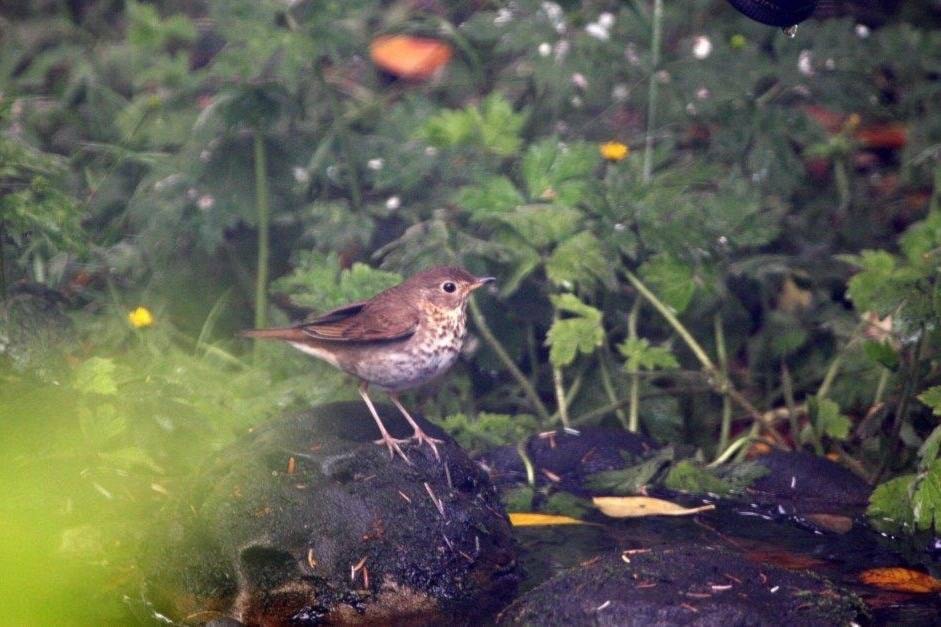By Margo Hearne
It’s windy and wet and the birds are staying on the nest except for a family of fledged robins now feeding on the lawn. It seems early to see fledged young but it’s easy to forget that it’s the summer month of June.
Robins return to the islands earlier than most other songbirds and settle down right away. If they lay eggs in mid-March, chicks should be ready to leave the nest by mid-April, and by mid-to-late May they should be foraging for themselves. So it shouldn’t really be a surprise, it just seems like it’s been cold for a long time this year. It was only 8 C this morning, the same as it was on January 15!
Many robins will re-nest — they have time before the sun starts to set earlier in the evening. It’s all about light, heat and food. Later arrivals such as Swainson’s Thrushes or Barn Swallows don’t have the same leeway. Swainson’s came back in May and are now singing a rich melody late into the evening. Their young should be out and about by mid-July, which is when their evening song is stilled. It’s a short season, not like down in the hot countries where some species can nest year-round.
The Rufous Hummingbird is busy at the feeder. It is so territorial that one wonders how it can sustain enough energy to feed its tiny family. It buzzes after interlopers, zaps through the air on a high dive, and seems to really waste a ton of energy protecting its space. Is it one way to develop those tiny muscles for the long flight south? Who knows? Of course, if it sits on a nest all night it just might need the exercise.
Its larger feathered cousin the Sandhill Crane likely needs some exercise, too. First there were two, then five, now there are up to 20 stalking through the long grass in the Delkatla Wildlife Sanctuary. They arrived this week all of a flurry, with feathers flounced and much loud protest from the “owners” of the flats: that is, the nesting pair. The pair has been pretty low-key lately, and we wait to see if any ankle-height golden chicks will appear in the coming weeks. Sandhills, being big birds, need a lot of nesting space. Like humans, they need space, and time to feel at ease.
The nesting Red-breasted Sapsucker has found a new place to drum. Our woodshed roof has a nice, ringing resonance and it’s been having a wonderful time hammering away at five in the morning. It used to drum on a metal plate at the top of a nearby hydro pole but someone took its toy away. Too many complaints from the neighbours? The bird’s season is short and their bravado and bright colours are more to be admired than not. It simply likes to let other sapsuckers know it’s the best.
